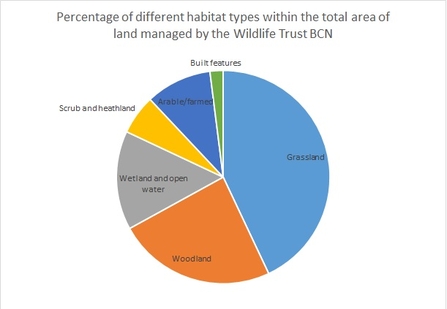Our nature reserves encompass a wide variety of habitats and plant communities; from the fine-leaved grasses and wildflowers of chalk grassland sites, to reedbeds and other wetlands, and ancient woodlands. Even within a single reserve there can be quite a range. Over the years we have accumulated quite a lot of detailed survey information showing the locations of these habitats. This can be as simple as sketch outlines on a map, or as detailed as a National Vegetation Classification (NVC) survey, which involves identifying plants at a series of sample points and working out which community in a set of defined British plant communities is the closest match.
As well as telling us more about exactly what we have, we can also use information from these surveys for a number of other purposes. By repeating a survey some years later, we can monitor changes and see what effects our management is having. We can also use surveys to help plan management more accurately; for example, if we know exactly how much area a habitat covers, we can get a better idea of things like how much seed we might need to restore a particular area of grassland, or how much time it will take to cut back scrub. Recently, there has also been a lot of discussion about the importance of natural habitats for capturing and storing atmospheric carbon dioxide, as part of combatting climate change. By looking more closely at the habitats we manage, we can work out how much they are contributing to carbon storage and sequestration, alongside their key role in preserving biodiversity.





